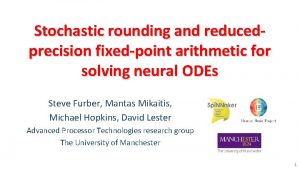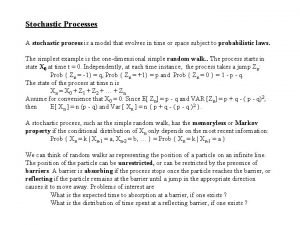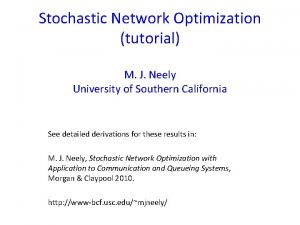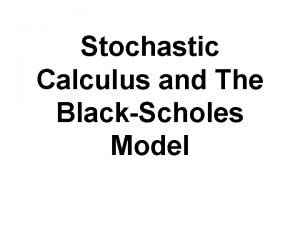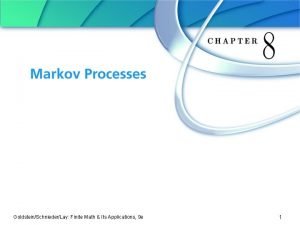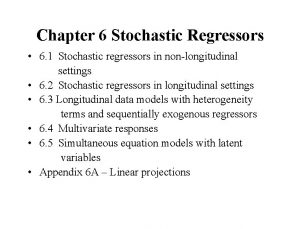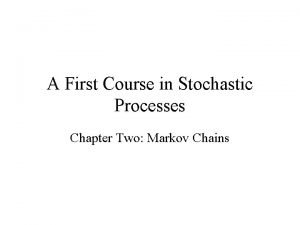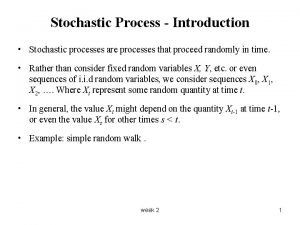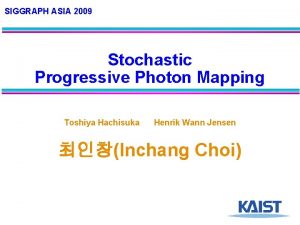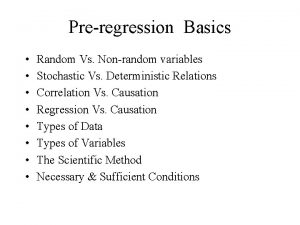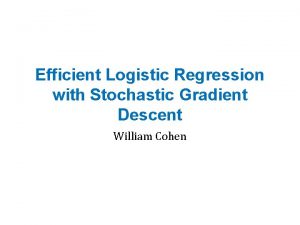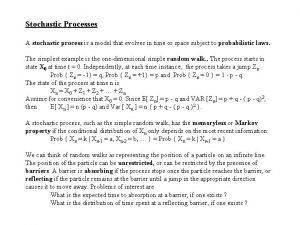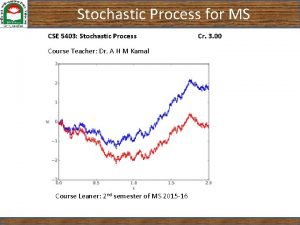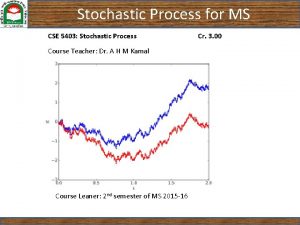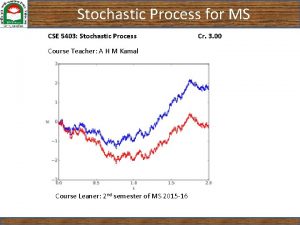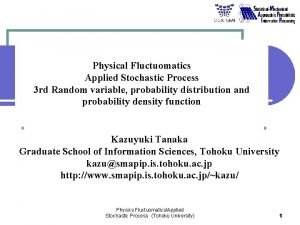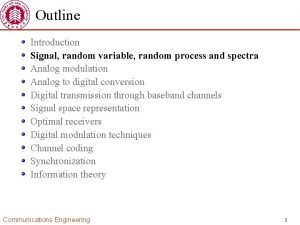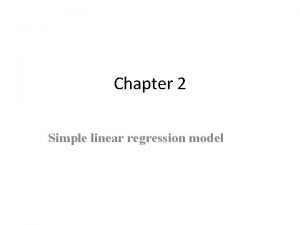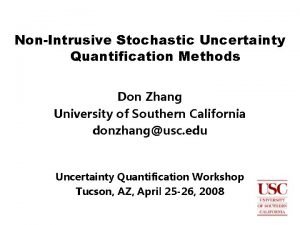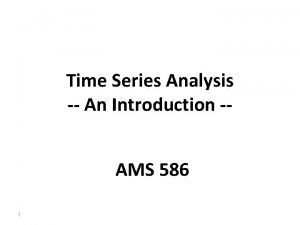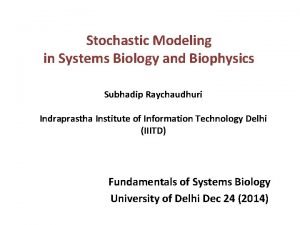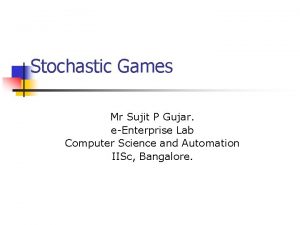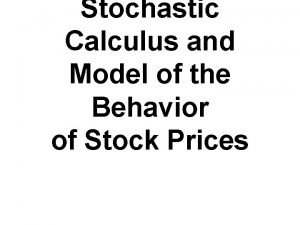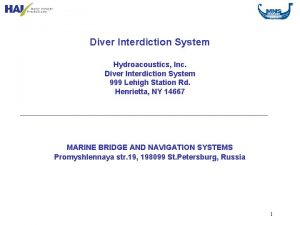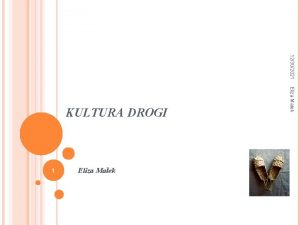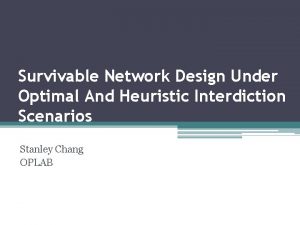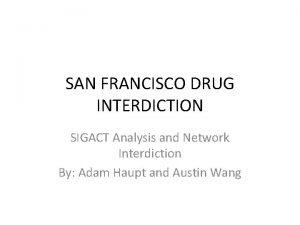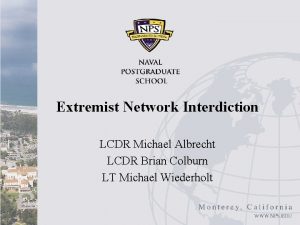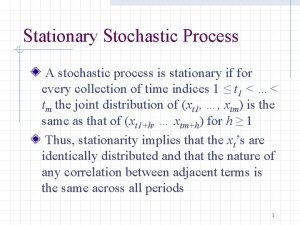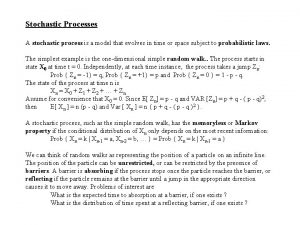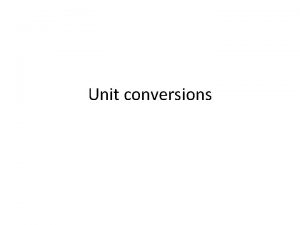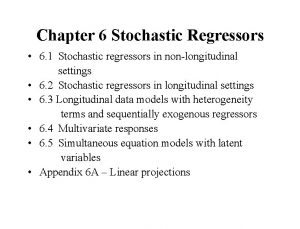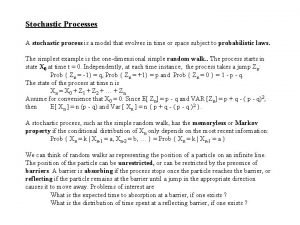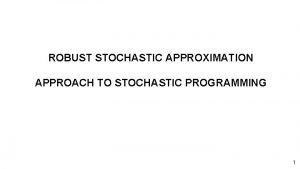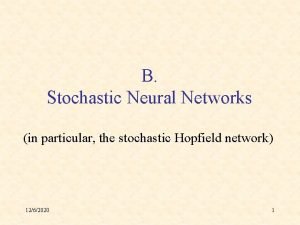Stochastic Network Interdiction Udom Janjarassuk 12302021 1 Outline





















![Decomposition Approach (cont. ) E [Q(x, s)] is piecewise linear, and convex n The Decomposition Approach (cont. ) E [Q(x, s)] is piecewise linear, and convex n The](https://slidetodoc.com/presentation_image_h2/3d0de3e2bb13e21f562428c12863d875/image-22.jpg)

![Computational results (cont. ) Note: Optimal objective value in [Cormican, Morton, Wood]=10. 9 with Computational results (cont. ) Note: Optimal objective value in [Cormican, Morton, Wood]=10. 9 with](https://slidetodoc.com/presentation_image_h2/3d0de3e2bb13e21f562428c12863d875/image-24.jpg)

![Computational results (cont. ) Note: Optimal objective value in [Cormican, Morton, Wood]=80. 4 with Computational results (cont. ) Note: Optimal objective value in [Cormican, Morton, Wood]=80. 4 with](https://slidetodoc.com/presentation_image_h2/3d0de3e2bb13e21f562428c12863d875/image-26.jpg)


- Slides: 28

Stochastic Network Interdiction Udom Janjarassuk 12/30/2021 1

Outline Introduction n Model Formulation n Dual of the maximum flow problem n Linearize the nonlinear expression n Sample Average Approximation n Decomposition Approach n Computational Results n Further Work n 12/30/2021 2

Introduction n Network Interdiction Problem 12/30/2021 3

Introduction (cont. ) n Stochastic Network Interdiction Problem (SNIP) n n Goal: minimize the expected maximum flow This is a two-stages stochastic integer program n n n Uncertain successful interdiction Uncertain arc capacities Stage 1: decide which arcs to be interdicted Stage 2: maximize the expected network flow Applications n n n Interdiction of terrorist network Illegal drugs Military 12/30/2021 4

Formulation n n n Directed graph G=(N, A) Source node r N, Sink node t N S = Set of finite number of scenarios ps = Probability of each scenario K = budget hij = cost of interdicting arc (i, j) A 12/30/2021 5

Formulation (cont. ) where fs(x) is the maximum flow from r to t in scenario s 12/30/2021 6

Formulation (cont. ) n uij = Capacity of arc (i, j) A A’ = A {r, t} n ijs = n yijs = flow on arc (i, j) in scenario s n 12/30/2021 7

Formulation (cont. ) Maximum flow problem for scenario s 12/30/2021 8

Formulation (cont. ) The dual of the maximum flow problem for scenario s is Strong Duality, we have 12/30/2021 9

Formulation (cont. ) 12/30/2021 10

Formulation (cont. ) 12/30/2021 11

Linearize the nonlinear expression n Linearize xij ijs zijs = xij ijs xij = 0 xij = 1 n Then we have n Let zijs = 0 zijs = ijs zijs – Mxij <= 0 – ijs + zijs <= 0 ijs – zijs + Mxij <= M where M is an upper bound for ijs , here M = 1 12/30/2021 12

Formulation (cont. ) 12/30/2021 13

Formulation (cont. ) 12/30/2021 14

Sample Average Approximation n Why? n n n Impossible to formulate as deterministic equivalent with all scenarios Total number of scenarios = 2 m, m = # of interdictable arcs Sample Average Approximations n n 12/30/2021 Generate N samples Approximate f(x) by 15

Sample Average Approximation(cont. ) n Lower bound on f(x)=v* n Confidence Interval 12/30/2021 16

Sample Average Approximation(cont. ) n The (1 - )-confidence interval for lower bound Where P(N(0, 1) z )=1 - 12/30/2021 17

Sample Average Approximation(cont. ) n Upper bound on f(x) n Estimate of an upper bound (For a fixed x) n n Generate T independent batches of samples of size N Approximate by 12/30/2021 18

Sample Average Approximation(cont. ) n Confidence Interval Where P(N(0, 1) z )=1 - n The (1 - )-confidence interval for upper bound 12/30/2021 19

Decomposition Approach 12/30/2021 20

Decomposition Approach (cont. ) and 12/30/2021 21
![Decomposition Approach cont E Qx s is piecewise linear and convex n The Decomposition Approach (cont. ) E [Q(x, s)] is piecewise linear, and convex n The](https://slidetodoc.com/presentation_image_h2/3d0de3e2bb13e21f562428c12863d875/image-22.jpg)
Decomposition Approach (cont. ) E [Q(x, s)] is piecewise linear, and convex n The problem has complete recourse – feasible set of the second-stage problem is nonempty n The solution set is nonempty n Integer variables only in first stage n Therefore, the problem can be solve by decomposition approach (L-Shaped method) n 12/30/2021 22

Computational results SNIP 4 x 9 example: Note: 1. Only arcs with capacity in ( ) are interdictable 2. The successful of interdiction = 75% 3. Total budget K = 6 12/30/2021 23
![Computational results cont Note Optimal objective value in Cormican Morton Wood10 9 with Computational results (cont. ) Note: Optimal objective value in [Cormican, Morton, Wood]=10. 9 with](https://slidetodoc.com/presentation_image_h2/3d0de3e2bb13e21f562428c12863d875/image-24.jpg)
Computational results (cont. ) Note: Optimal objective value in [Cormican, Morton, Wood]=10. 9 with error 1% 12/30/2021 24

Computational results (cont. ) SNIP 7 x 5 example: 12/30/2021 25
![Computational results cont Note Optimal objective value in Cormican Morton Wood80 4 with Computational results (cont. ) Note: Optimal objective value in [Cormican, Morton, Wood]=80. 4 with](https://slidetodoc.com/presentation_image_h2/3d0de3e2bb13e21f562428c12863d875/image-26.jpg)
Computational results (cont. ) Note: Optimal objective value in [Cormican, Morton, Wood]=80. 4 with error 1% 12/30/2021 26

Further work… n Solving bigger instance on computer grid n Using Decomposition Approach 12/30/2021 27

Thank you 12/30/2021 28
 Stochastic rounding
Stochastic rounding Stochastic programming
Stochastic programming Stochastic process model
Stochastic process model Divbar
Divbar Deterministic demand vs stochastic demand
Deterministic demand vs stochastic demand Stochastic calculus
Stochastic calculus Stochastic vs dynamic
Stochastic vs dynamic Absorbing stochastic matrix
Absorbing stochastic matrix Stochastic regressors
Stochastic regressors Non stochastic theory of aging
Non stochastic theory of aging A first course in stochastic processes
A first course in stochastic processes Stochastic process introduction
Stochastic process introduction Stochastic progressive photon mapping
Stochastic progressive photon mapping Known vs unknown environment
Known vs unknown environment Discrete variable
Discrete variable Logistic regression stochastic gradient descent
Logistic regression stochastic gradient descent Stochastic process modeling
Stochastic process modeling Stochastic process
Stochastic process Stochastic process
Stochastic process Stochastic process
Stochastic process Stochastic process
Stochastic process Stochastic processes
Stochastic processes Guided, stochastic model-based gui testing of android apps
Guided, stochastic model-based gui testing of android apps Stochastic specification of prf
Stochastic specification of prf Stochastic uncertainty
Stochastic uncertainty Components of time series analysis
Components of time series analysis Stochastic vs probabilistic
Stochastic vs probabilistic Stochastic vs probabilistic
Stochastic vs probabilistic Stochastic calculus
Stochastic calculus
